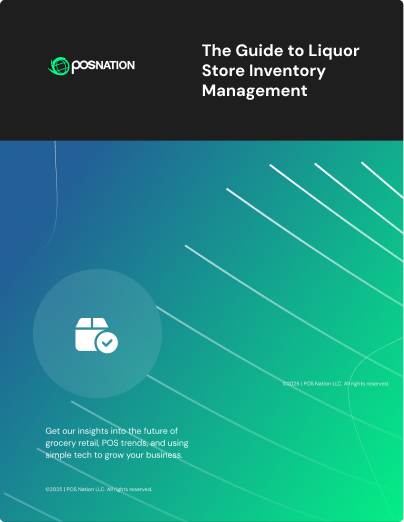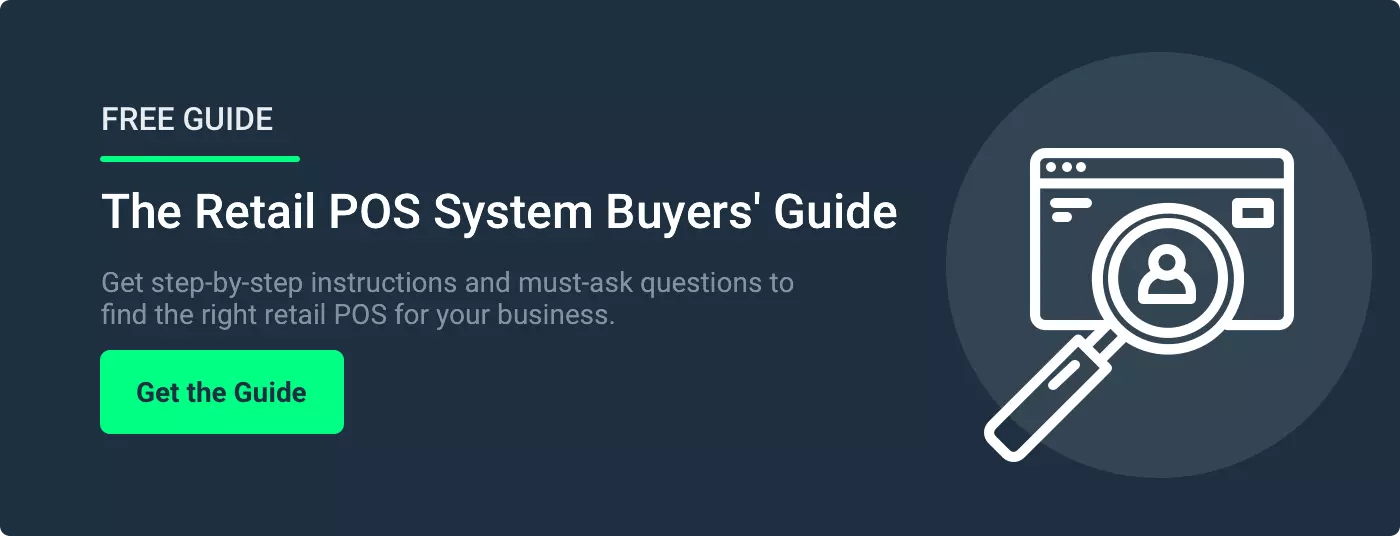Can you imagine being a retail store owner 30 years ago? Managing inventory manually with spreadsheet programs. Making orders to suppliers in multiple different tools. Flying blind when it comes to customer preferences.
We bet store owners back then wished they had a tool that could automate inventory management, predict customer behavior, and optimize supply chains.
You don’t have to wish for it. You have access to all of that information and much more. Literally at your fingertips. Your point of sale (POS) system is a virtual goldmine of data, and if you learn to harness that data, you’ll drive profits through the roof.
Margins are tight, and competition is high. Using retail analytics might be the game-changer you’re looking for.
This article will show how utilizing retail analytics can maximize your profits. We'll walk you through several powerful tips — from embracing predictive analytics and optimizing your inventory to employing real-time analytics and leveraging customer behavior insights. Let’s dive in.
How Can Retail Analytics Boost Your Profits?
According to McKinsey Global Institute, data-driven companies are 19 times more likely to be profitable and 23 times more likely to acquire customers. Other retail stores already use data to crush sales and profits, and you don’t want to be left behind.
To use retail and point of sale analytics, you first need to collect and know how to analyze data. It might feel overwhelming at first, but modern POS systems come with pre-built reports to help you understand the data you collect.
Crunching your numbers can lead to game-changing insights, so it’s worth taking the time. From sales trends and customer behavior to inventory needs and marketing performance, you’ll have all the insights you need to outperform your competitors.
Guessing what customers want and making decisions on gut instinct alone doesn’t work in the modern retail environment. Data reveals what’s driving sales and profits in your store — and unlocking that data can lead to more revenue and happier customers.
Related Read: Why Is Tracking Inventory Important for Your Store? 5 Insights You Can't Afford to Miss
Let’s see how you can turn analytics into profits!
Tip #1. Optimize Inventory Management
Inventory management is often the most significant part of running a retail store. It can drive profits or cause losses, and the trick is having enough stock to meet demand without going overboard and having a warehouse full of inventory you can’t shift.
With retail analytics, you can forecast demand and predict what your customers want weeks and months in advance. You can use historical sales data, market trends, and real-time market changes to ensure popular items are in stock. Less inventory buildup reduces carrying and storage costs and improves cash flow.
What else can you do?
- Plan strategic markdowns on slow-moving and perishable items. The data shows exactly when to mark it down, by how much, and on which items to drive maximum sell-through.
- You can make FIFO (first in, first out) a breeze. Analytics show expiry dates and inventory age, so you can move older stock first.
- Tracking batches of shipments and inventory is much easier. You'll have access to batch numbers, manufacturing dates, and shelf life forecasts to rotate stock seamlessly.
Pro tip: Your POS system centralizes data from your brick and mortar and e-commerce channels, giving you 360-degree, real-time visibility into stock levels. As soon as sales occur, inventory adjusts in real time. This view of your stock enables intelligent automation of reordering and helps avoid stockouts, minimize waste, and keep customers happy.
Tip #2. Personalize Shopping Experiences
To drive profits in the modern retail environment, you need to hyper-personalize your customers’ experience. Customers get personalized experiences online and expect them in person. Luckily, you have a wealth of data to facilitate your efforts.
You can analyze how customers research, browse, purchase, and engage with your products and serve up tailored product recommendations, custom discounts, and personalized content. Instead of generic emails about products they’re not interested in, you can send emails with subject lines like, “Hey Graham, those cargo shorts you love are back in stock!”
Related Read: How To Attract Customers to Your Store
When customers feel valued and understood, you can earn serious loyalty points, keep them coming back, and even boost basket sizes, increasing sales and profits.
Pro tip: Your POS system unifies data from all channels and lets you personalize engagement across the board. You can use the data to make relevant suggestions, show complementary products, and turn data into customized experiences that sell.
Tip #3. Leverage Tools and Platforms
Modern POS systems have powerful analytics and reporting tools built in. From detailed sales reports and traffic metrics to inventory analysis and customer segmentation, there’s something for every retailer to explore.
The best POS systems use Artificial Intelligence (AI) and Machine Learning (ML) to streamline inventory management, facilitate omnichannel selling, and forecast demand. Here are examples of each:
- Retailers can identify fast-selling products that need to be restocked quickly. Also, automated reports show seasonal items with slowing demand that need to be marked down or cleared.
- Using automated customer segmentation, a sporting goods retailer spotlights their most valuable customers and targets them with personalized offers, both online and in store.
- A grocery store owner leverages past sales data, seasonality, and upcoming holidays to predict the perishable items they’ll need 2-3 weeks in advance.
Pro tip: The best POS systems come with data-driven insights that help optimize everything from shelf placement to marketing campaigns, freeing up time for you to work on strategy, serve customers, and drive profits.
Tip #4. Tailor Sales and Marketing Strategies
You want to make your marketing smarter, not harder. Promotional plans, sales, and campaigns often involve a lot of guesswork. But with analytics, you can use data to inform your strategies.
For example, sales data shows you what price points hit the revenue sweet spot in the past. You might find that the highest price points don’t always produce the highest revenue. Finding the sweet spot enables you to maximize revenue potential and position your products.
From there, you can build your marketing plan using the available data.For example, you could test email subject lines to help boost open rates. Let’s say you’re having a summer sale. You might send one email with the subject “Summer discounts are here!” and another with “Get 20% off summer goods this week only!” Knowing which works best helps optimize your email marketing performance.
Then, when it's time to roll out campaigns, you'll know which products to recommend to each segment and how to price them correctly.
Pro tip: Your POS system can track all transactions and customer data to inform marketing initiatives. You’ll have real-time tracking of campaigns, such as promotional code redemptions, email open rates, and product performance.
Tip #5. Enhance Supply Chain Management
Supply chain hiccups can destroy profits. Overstocking bloats your budgets, delivery delays cause chaos, and stockouts frustrate your customers — it’s a perfect storm you don’t want to get stuck in. How can retail analytics optimize your supply chain?
Related Read: 9 Differences of E-Commerce vs. Retail: Can You Do Both?
With analytics, you can:
- Predict future demand to avoid underordering or overordering, allowing you to optimize inventory budgets.
- Identify slow-moving items to guide your markdown and promotion strategies, and shore up reordering levels based on sales data.
- Use your centralized inventory database to ship stock between locations, helping you meet demand.
- Catch supplier delays early by tracking stock shortages. You can also negotiate with suppliers using hard data and nurture partnerships with suppliers doing a great job.
When your supply chain runs optimally, you can focus on your store and drive profits.
Pro tip: Your POS system is a powerful tool for optimizing your supply chain. It enables accurate demand forecasting, provides real-time inventory visibility, identifies fast and slow-moving items, automates reorder points, and tracks supplier performance. You’ll also have custom reports to help you manage the supply chain.
How Retail Analytics Help Maximize Profits
Real-time retail analytics show you what’s happening now, and with a robust POS system, you can take action immediately. You can predict bestsellers to avoid them selling out, replenish inventory before it’s too late, and raise prices on hot items. With better inventory management, you can reduce costs and maximize sales.
Training your staff to read, analyze, and use data is a must. You can teach your employees how customer data can help them personalize recommendations or teach managers to interpret reports and turn insights into winning strategies. Data literacy is a skill every retail worker should learn.
Capitalizing on real-time data and changes instead of reacting to them will put you in a good position to drive profits.
Retail Analytics: The Future Is Data-Driven
If the future of retail will be driven by data, now is the time to jump on board and use retail analytics to boost profits. Utilizing predictive analytics, optimizing inventory, personalizing marketing efforts, utilizing real-time analytics, or understanding customer behavior can profoundly affect your profitability.
Remember, it's not about being overwhelmed by the data.
Let your POS system crunch the data and use those insights to drive profits. At POS Nation, we pride ourselves on helping small businesses use our retail-specific POS systems. From pre-built and custom reports to customer loyalty programs, we have everything you need to turn data into profits!
Do you want to see how? Schedule a demo with our retail experts today!






 by Spence Hoffman
by Spence Hoffman

 by Graham Hoffman
by Graham Hoffman


 by Gina Obert
by Gina Obert